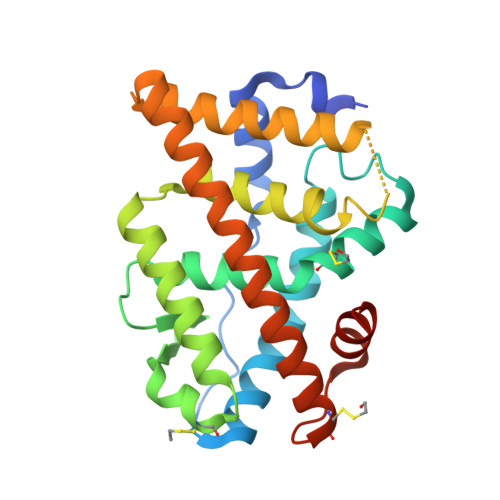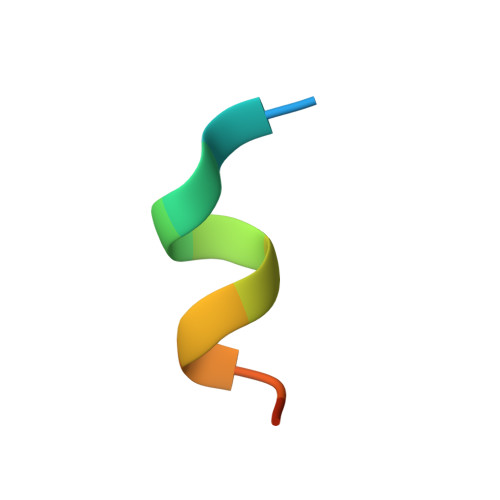NFkappaB selectivity of estrogen receptor ligands revealed by comparative crystallographic analyses
Nettles, K.W., Bruning, J.B., Gil, G., Nowak, J., Sharma, S.K., Hahm, J.B., Kulp, K., Hochberg, R.B., Zhou, H., Katzenellenbogen, J.A., Katzenellenbogen, B.S., Kim, Y., Joachmiak, A., Greene, G.L.(2008) Nat Chem Biol 4: 241-247
- PubMed: 18344977
- DOI: https://doi.org/10.1038/nchembio.76
- Primary Citation of Related Structures:
2B23, 2QA6, 2QA8, 2QAB, 2QGT, 2QGW, 2QH6, 2QR9, 2QSE, 2QXM - PubMed Abstract:
Our understanding of how steroid hormones regulate physiological functions has been significantly advanced by structural biology approaches. However, progress has been hampered by misfolding of the ligand binding domains in heterologous expression systems and by conformational flexibility that interferes with crystallization. Here, we show that protein folding problems that are common to steroid hormone receptors are circumvented by mutations that stabilize well-characterized conformations of the receptor. We use this approach to present the structure of an apo steroid receptor that reveals a ligand-accessible channel allowing soaking of preformed crystals. Furthermore, crystallization of different pharmacological classes of compounds allowed us to define the structural basis of NFkappaB-selective signaling through the estrogen receptor, thus revealing a unique conformation of the receptor that allows selective suppression of inflammatory gene expression. The ability to crystallize many receptor-ligand complexes with distinct pharmacophores allows one to define structural features of signaling specificity that would not be apparent in a single structure.
- Department of Cancer Biology, The Scripps Research Institute, 5353 Parkside Drive, Jupiter, Florida 33458, USA. knettles@scripps.edu
Organizational Affiliation:


















